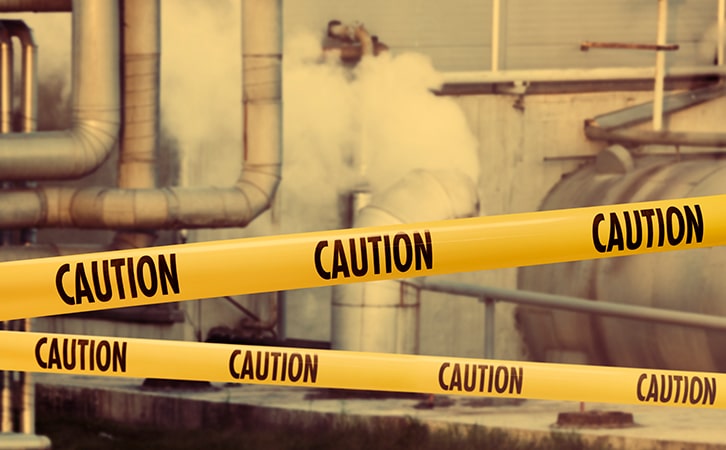Changes occurring within an organization’s operations are inevitable, and it’s imperative that the crucial process of Management of Change (MOC) procedures be completed to assess and address the risks or unintended consequences that stem from changes made.
MOC is a systematic method for identifying and controlling safety, health and environmental risks associated with planned changes to facilities, personnel, policies or operations – whether they’re intended to be permanent changes, but also (and maybe especially) when they’re considered temporary. There’s an old saying that there’s nothing quite so permanent as a “temporary change,” and plans thought to be temporary are even more likely to bypass reviews to assess and control risks.
A common response to the idea of developing MOC from organizations is a sense of hesitation, that developing all those processes will take too much time, use too many resources, and will not be worth all the effort it would take. However, when considering the alternative — the consequences of inadequate change management leading to disasters and their required response — the value becomes strikingly clear.
What is Management of Change?
The primary purpose of MOC processes is to engage key stakeholders in the systematic evaluation and management of potential risks associated with operational changes. This structured approach involves assessing the impact of changes on safety, health, and environmental factors before implementation.
Here’s how effective MOC processes can reduce the risk of incidents:
- Risk Identification and Assessment: MOC processes systematically evaluate potential risks associated with operational changes before implementation. This proactive approach allows for thorough risk assessment and mitigation planning, to avoid disasters occurring.
- Compliance and Regulatory Alignment: Agencies like Occupational Safety and Health Administration (OSHA) establish and enforce regulations such as Process Safety Management (PSM) requiring covered facilities to conduct MOC. Having a documented and effective MOC process not only ensures legal compliance, it also fosters a safer work environment.
- Operational Efficiency: Contrary to common belief, implementing MOC processes can streamline operations by reducing disruptions when unexpected changes occur, as well as the downtime caused by incidents.
The Cost of Disaster Response vs. Prevention
According to the Environmental Protection Agency (EPA), the National Safety Council (NSC), and OSHA, workplace disasters not only result in immediate human and environmental impacts, but also incur staggering financial burdens.
According to NSC, work injuries in 2022 cost, in dollars:
- $167B, including $50.7B in wage and productivity losses (down from $171B in 2020)
- $37.6B in medical expenses
- $54.4B in administrative expenses
- $15B in uninsured costs
- $5.6B for vehicle damage
- $3.7B for fire losses
On average thus far in the 2020s, medical consultations for injured employees cost $40,000 each, while deaths cost $1,390,000, encompassing wage, medical, administrative, and employer costs (excluding property damage).
On the grander scale of things, organizations have to do significant clean-up after an incident, more than just physically. Imagine a scenario where a chemical spill occurs due to an unapproved process change, resulting in injury to workers and significant environmental contamination.
In this reactive stance, the organization now faces:
- Financial Fallout: Immediate costs include cleanup expenses, fines, legal fees, and potential compensation claims. Long-term costs may involve reputation damage, increased insurance premiums, and diminished investor confidence.
- Operational Disruption: The incident disrupts production schedules, halts operations, and strains resources as the organization scrambles to mitigate the damage. Many facilities that experience major accidents do not resume operations afterward.
- Human Impact: Beyond financial implications, incidents can harm employees’ health, morale, and trust in management, impacting productivity and organizational culture. Depending on the nature of the incident, communities outside the company can be greatly affected, such as through environmental exposure risks like water, air and pollution.
Here’s why investing time and effort into MOC processes pays off far more than relying on disaster response measures:
- Risk Identification and Mitigation: By analyzing potential hazards and assessing their impact, organizations can proactively address risks before they escalate into disasters.
- Regulatory Compliance: By adhering to structured MOC protocols, organizations ensure compliance with regulatory requirements, avoiding penalties and regulatory scrutiny.
- Operational Continuity: Properly managed changes reduce the likelihood of unplanned downtime or interruptions, maintaining smooth operations and preserving productivity.
- Safety Culture Reinforcement: Prioritizing MOC fosters a culture where safety and environmental stewardship are core values. Employees are more likely to engage in safe practices and report potential hazards, further reducing risks.
Building a Resilient Future
While developing and implementing Management of Change processes may require upfront investment in time, resources, and effort, the alternative — disaster response — is exponentially more costly and detrimental to an organization. Organizations need to view MOC not as a burden, but as a strategic investment in safeguarding their most valuable assets: their employees, communities, and operational continuity.
By prioritizing proactive risk management through MOC, companies can not only enhance their EHS performance but also contribute positively to their bottom line and reputation. With all these points in consideration, the value of developing MOC processes today to avoid the catastrophic costs of disaster response tomorrow is an obvious choice.
By investing in proactive risk management through MOC, organizations not only safeguard against potential disasters but also cultivate a culture of safety, compliance, and operational excellence. The effort expended in thoughtful planning and implementation upfront far outweighs the reactive costs incurred in the aftermath of an incident.
The choice between disaster response and proactive risk management through MOC is not merely about avoiding crises; it’s about ensuring sustainable success and safeguarding the well-being of everyone involved – the organization, its employees and its communities.
Our VelocityEHS Management of Change software streamlines the complex processes for evaluating the impacts of organizational process changes. It’s designed to give you the flexibility needed to manage organizational change anywhere, anytime.
